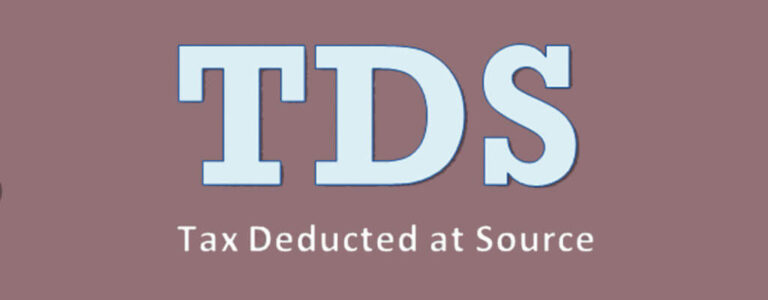TDS Deduction: How to Save TDS on Salary (Plan before March 2023)

TDS Deduction: How to Save TDS on Salary (Plan before March 2023)
Posted Date: February 8th, 2023
TDS stands for tax deducted at source, the actual source of income. Your tax bracket and, subsequently, the TDS deduction of your pay is determined by the income you get from your employer. Depending on your tax band, the TDS deduction on pay will be about 10% and 30%. Employers withhold the necessary taxes from the salary in the event of TDS before giving it to you. Nirmala Sitharaman, the Union Finance Minister, made a number of significant announcements on the new personal income tax system at the Budget 2023 briefing on Wednesday. In the new tax system, she suggested raising the income tax refund cap from Rs 5 lakh to Rs 7 lakh. Notably, under the new system, the resident individual’s reimbursement has been increased to Rs 7 lakh.
You now understand why TDS is taken from salaries because it is required. By investing in plans where income tax authorities offers tax exemptions, you may always reduce the TDS amount.
How can I reduce or save TDS on my salary?
To avoid the TDS, you can file Form 15G or 15H. Use Form 15H there in the case of elderly citizens. The complete income may be declared if there is no tax owed on it. Form 15G is relevant to everyone else, excluding NRIs.
Additionally, by making investments in financial goals that qualify for tax deductions, you may simply eliminate that risk. In order to achieve that, you would need to provide your employer with all the necessary legitimate documentation in order to be eligible for tax deductions under Section 80C as well as other provisions of the Income Tax Act of 1961.
Under specific allowance categories, the employee is qualified to save money or have their TDS reduced from their wage. These consist of:
- Travel Allowance (TA) – If the employer pays for the employee’s transportation, the former may request a tax-exempt status on the TDS withheld. The corporation may only offer this benefit if it does not offer its employees transportation to and from work.
- Allowance for house rent – Some businesses give their workers housing or home rent assistance. Rent receipts can be given to employer as evidence of housing in order to claim a tax exemption on this as well.
- Medical Benefits – If an employee obtains medical coverage from their company during a medical emergency, they may use that coverage to qualify for a tax break or exemption by providing the IRS with the original invoices for their medical care.
- Donations – You must present a valid receipt as proof if you donated money to any charitable organisation, including a temple, mosque, authorised trust, national defence budget, PM national relief account, etc. The receipt must include all pertinent information, including the name and address of the organisation or trust, the donor’s name, validity, registration number, and PAN.
Tips for Avoiding TDS on Salary Options for Reducing TDS on Salary
If you are wondering how to lower TDS on your pay, read on. The following is a list of the several tax-saving alternatives you have in this regard:
- PPF (Public Provident Fund)
- NPS (National Pension System)
- ULIP (unit-linked insurance policies)
- Samriddhi Yojana for Sukanya
- Tax-avoidance FDs (fixed deposits)
- ELSS (equity-linked saving schemes)
In accordance with Section 80C, you may also be eligible for an annual tax exemption of up to 1.5 lakh rupees on real estate you own or have rented out.
Reductions in TDS
The following steps are taken in the TDS deduction process:
- Total earnings calculation – The sum of the employee’s earnings must be determined by the employer.
- Estimating the total amount suitable for the exemptions – The employer is responsible for figuring out the entire amount eligible for a tax break. The kind of money that qualifies for an exemption must be declared by the employee.
- Obtaining proof of investment and declaration – Employee investment and evidence must be obtained by the employer.
TDS deductions deposited
The employer will be required to deposit the TDS that has been collected with the government.
The TDS deduction under each Section is as follows:
Article 80C – An employee may claim a tax exemption of up to Rs. 1,50,000. The following investment plans are being taken into Investments in equity shares and mutual funds, such as ULIPs, Linked Savings Schemes of a Mutual Fund, and UTIs, are free from Section 80C taxation.
- Paid life insurance premium
- contribution to the statutory pension fund, the 15-year PPF, and the retirement fund
- payments for the Home Loan Account Scheme and National Savings Certificates
- Several National Savings Certificates’ interest payments are subject to a specific amount of tax.
- plan for fixed deposits for a minimum of five years
Article 80CCG
If an employee invests in certain equity saving programmes, they may be entitled to an annual exemption of up to Rs. 25,000. That investment should be kept for at least three years after the acquisition of the plan.
Article 80D
Section 80D provides a premium exemption a Medical Insurance was paid for. The dependents of the individual are likewise covered by the exemption. There are several more Sections that govern a wide range of different exclusions.
End note
Salaries are subject to tax deduction at source (TDS), which can be minimised by submitting Forms 15G or 15H, making investments in plans that are eligible for tax exemptions, & presenting sufficient justification. Through a variety of tax-saving options, including PPF, NPS, ULIP, Samriddhi Yojana, tax-avoidance FDs, and ELSS, TDS on salaries can be reduced. Employers must calculate the entire amount eligible with exemptions, get investment and declaration proof, deposit TDS deductions, & offer medical insurance premium exemptions.
Related Posts
Top Posts




Latest Post
Stay Informed
Sing up to stay update with Business, Lifestyle, Entertainment, and Many More.




